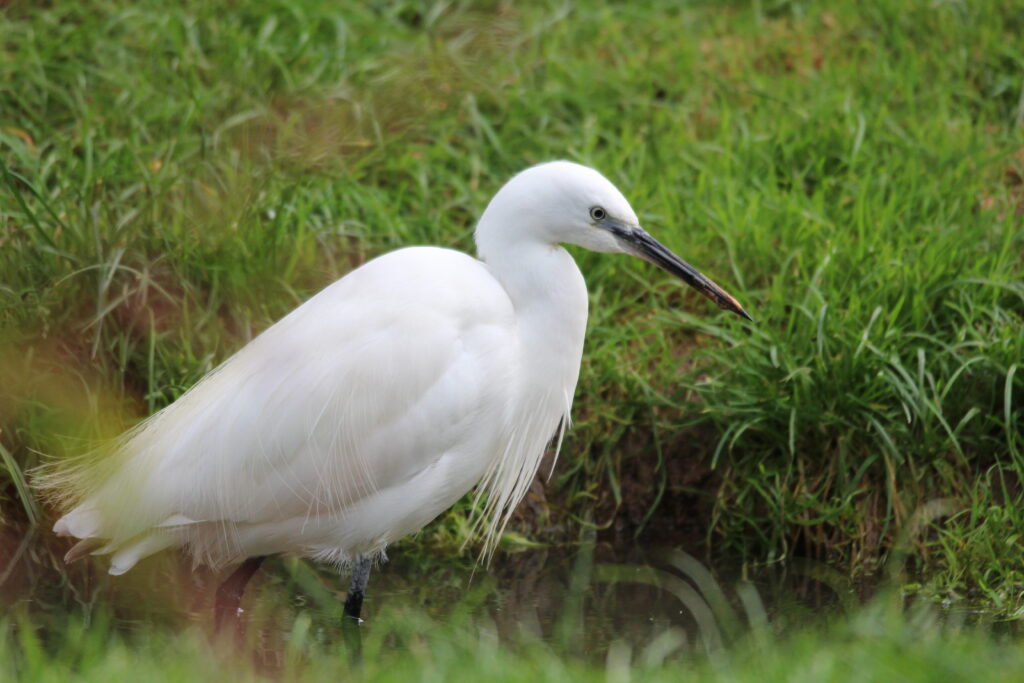
LITTLE EGRET
Class: Birds
Order: Pelecaniformes
Family: Ardeidae
Genus: Egretta
Species: Garzetta
Geographic distribution: Asia, Europe, Africa, and the Americas
Habitat: Water bodies, coastal areas, lagoons, estuaries, rice paddies, and other salt marshes.
Size / Wingspan: 65 cm / 86 to 104 cm
Lifespan: 20 years
Weight: 500 to 630 g
Sexual Maturity: 1-2 years
Incubation: 21 to 25 days
Clutch: 3-5 eggs
Diet: Carnivores, small fish, amphibians and their larvae, small lizards, crustaceans, mollusks, and various insects.
Protection Status: IUCN Status CR – Least Concern
Description
The black beak of the little egret resembles a real dagger: long, thin and slightly curved downwards. Its long black legs and yellow toes differentiate it from the great egret. During the breeding season, it develops various types of ornamental feathers on the back of its head, lower neck, back of the arm and back.
THREATS AND PRESERVATION
Little egret populations appear to be stable, and the species is not considered threatened overall, despite the decline in wetlands. Once hunted for its ornamental feathers used in fashion, especially to decorate ladies’ hats, the little egret is now protected in some regions.